10 Best Materials for Kitchen Cabinets
Find out more about kitchen cabinet materials for your next renovation project.
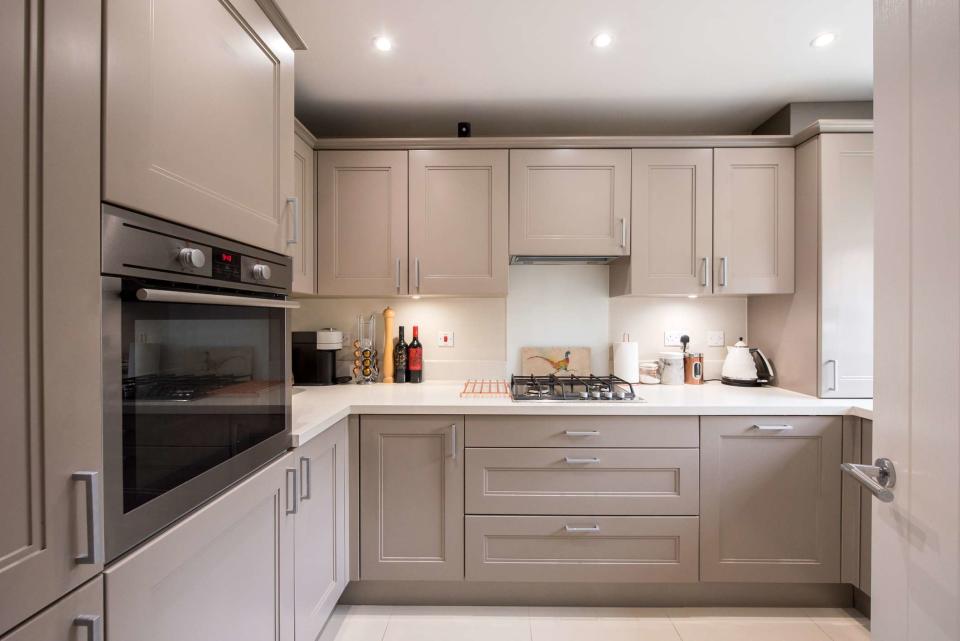
John Keeble / Getty Images
Reviewed by Johnathan Brewer
Whether you are installing new kitchen cabinets, replacing old kitchen cabinets, or making necessary repairs to existing cabinets, it's important to have a basic understanding of the various kitchen cabinet materials, their benefits, and their drawbacks. Without this information, it can be difficult to decide on the right choice for your kitchen. You may opt for a material that looks great with the current home aesthetic, but come to find that the material is not durable enough to hold up in a home full of kids.
The cost of a material may also come as a surprise if you haven't taken the time to properly research the range of available kitchen cabinet materials. Stainless steel, solid wood, and even plywood tend to have a higher price, though these materials are also the most durable options, so the cost may be worth it depending on the quality of the cabinet construction. To learn more about the 10 best materials for kitchen cabinets, take some time to educate yourself with this helpful guide to kitchen cabinet materials.
Medium-Density Fiberboard (MDF)
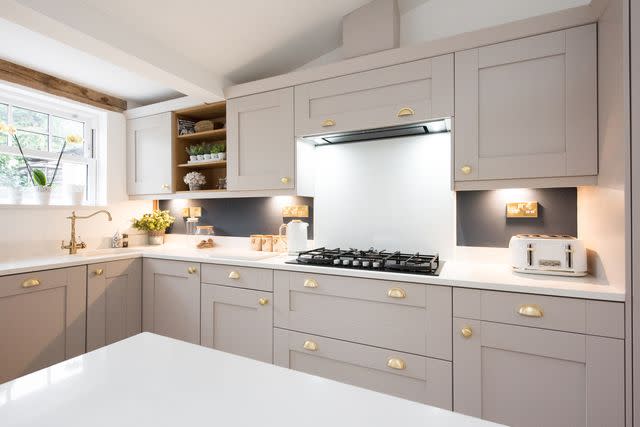
John Keeble / Getty Images
Best for: Styles, finishes, and affordability.
Medium-density fiberboard, or MDF, is a relatively common option for kitchen cabinets. This product is denser than hardwood and you can achieve a smooth, grain-free finish that isn't possible with solid wood or plywood. MDF is also water-resistant and mold-resistant, making it an ideal option for a high-moisture location, like the kitchen.
You can get MDF material or MDF cabinetry in a variety of styles and finishes. It can even be cut into different sizes and coated with laminate to increase the variability of the design. However, it needs to be noted that MDF is typically less durable than other cabinet materials and high temperatures can do extensive damage to this kitchen cabinet option.
Solid Wood
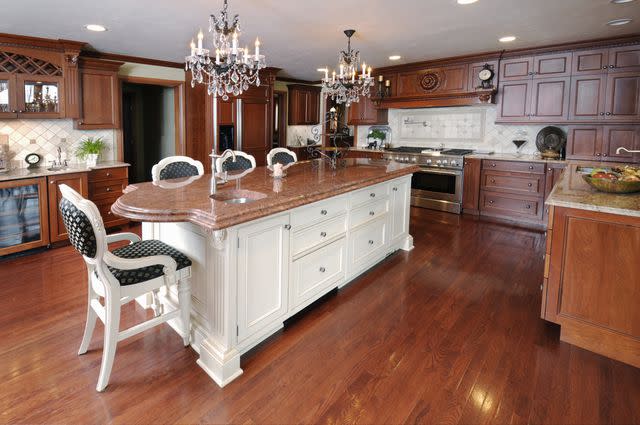
JamesBrey / Getty Images
Best for: Strength, durability, and long lifespan.
A top option for kitchen cabinetry is solid wood. This durable material is used in many construction projects, so it should come as no surprise that it is a commonly used kitchen cabinet material. The solid wood is tough, durable, and able to withstand the weight of one or more heavy objects without warping or breaking.
Additionally, solid wood is an environmentally friendly option that is typically crafted with sustainable resources. The drawback to using this material is that it generally costs more than almost any other type of kitchen cabinet material, with the exception of stainless steel. Due to the porous nature of wood, this material also tends to be highly susceptible to stains, so it's important to clean up spills as soon as possible.
Plywood
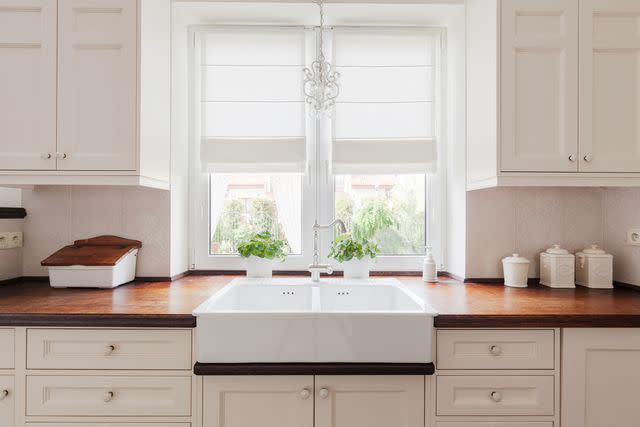
KatarzynaBialasiewicz / Getty Images
Best for: Lightweight design, easy repairs, and moderate durability.
For those that want sturdy, durable kitchen cabinets without paying the premium price of stainless steel or solid wood, plywood is an excellent alternative. Plywood is a lightweight yet durable material that holds up well when used to make kitchen cabinets. It's easy to manipulate, sand down, or fill, allowing you to quickly repair any chips, scratches, or other minor damage.
Opting for plywood over solid wood will help you save on material costs, though plywood is still more expensive than most wood substrates or manufactured wood products, so if price is a primary factor, then it may be better to go with a more affordable option. Additionally, if you aren't careful selecting plywood for this project, you may find knots, gaps, and thinner planks that may not hold up if the cabinet gets overloaded.
Stainless Steel
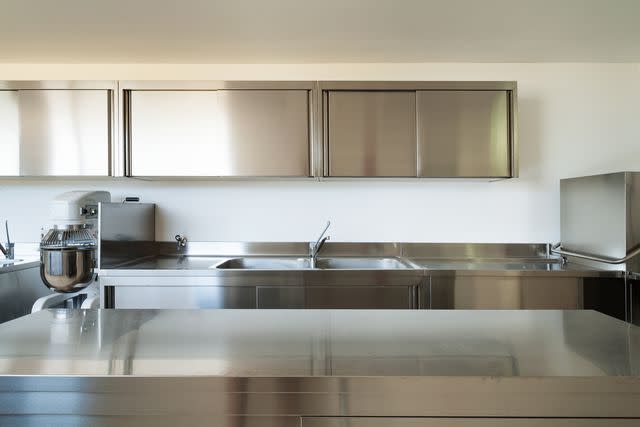
piovesempre / Getty Images
Best for: Durability, heat-resistance, water-resistance, and easy maintenance.
Even though stainless steel isn't a popular option for residential kitchen cabinets, it is frequently used in the construction of commercial kitchen cabinets due to the high level of durability, long life, and ease of cleaning. The smooth, metal surfaces can be wiped clean with little effort, removing all dirt, grime, oil, and any other type of debris.
Stainless steel is also highly resistant to heat and water, so users won't need to worry about accidentally damaging the kitchen cabinets with a hot pan or wet cookware. However, the high price of stainless steel kitchen cabinets and the niche style offered by this durable material is a significant drawback.
Particleboard
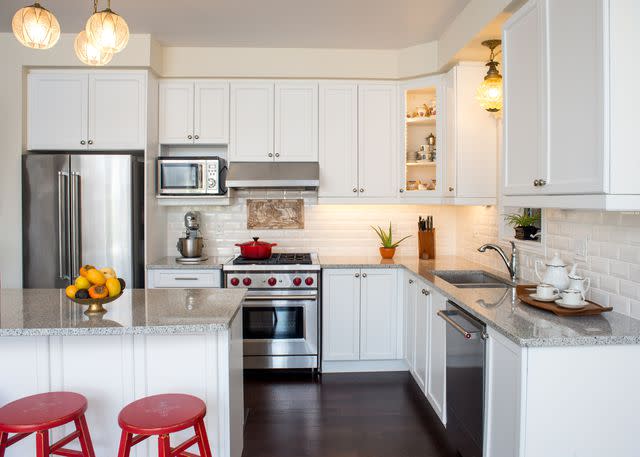
Chefmd / Getty Images
Best for: Affordability, lightweight design, and stain-resistance.
The least expensive material you can use to make kitchen cabinets is particleboard. This material is made from compressed wood chips, though it doesn't have the same strength and density as MDF or HDF. Due to the limited strength of this material, it isn't capable of supporting heavy loads without bending or flexing under the weight.
Particleboard can take a screw once or twice, but repeated attempted will quickly crumble the material. For this reason, particleboard is typically used to make the interior of kitchen cabinets instead of the cabinet doors. This is to reduce the chance that a heavy pull rips the cabinet door off the cabinet. Ultimately, the performance of particleboard as a kitchen cabinet material is reflected in the low price.
Melamine
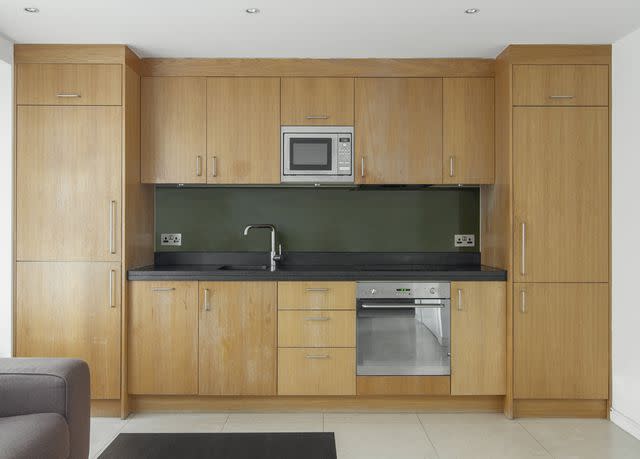
Justin Paget / Getty Images
Best for: Water-resistance, heat-resistance, stain-resistance, and durability.
Melamine boards are one of the most durable engineered wood materials available for kitchen cabinet construction. This material is made by using heat and pressure to bond a decorative resin-infused melamine paper to an MDF or particleboard substrate. The process ensures that the melamine will not peel away or delaminate.
Using melamine boards to make a kitchen cabinet is an excellent option because it costs less than solid wood or plywood without sacrificing durability. Additionally, this kitchen cabinet material is resistance to water, heat, staining, and warping, ensuring that the cabinet will remain in good condition through years of regular use.
Wood Veneer
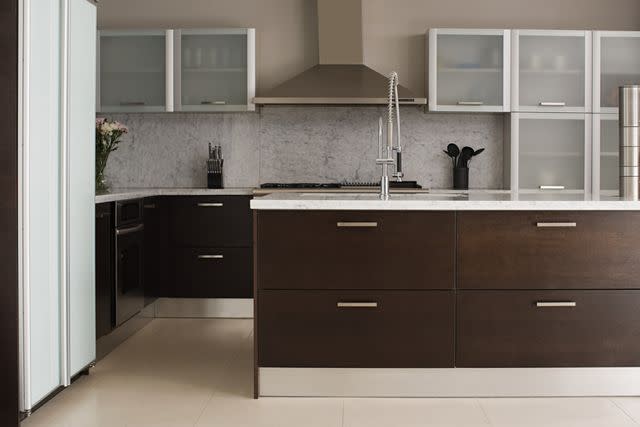
Best for: Wood-like appearance, lightweight design, and easy maintenance.
Made by peeling or cutting a thin strip of solid hardwood, wood veneers retain the attractive, natural wood appearance without the high cost of solid wood kitchen cabinets. After the strip is cut from the solid hardwood, the wood veneer is then bonded to plywood, MDF, or particleboard to create wood-like panels that mimic the aesthetic of solid wood.
This material is a thin, lightweight option that is resistant to warping and relatively easy to maintain by cleaning the kitchen cabinets as needed. Wood veneer cabinets are more durable than laminate, though this material is vulnerable to water damage, so you need to make sure to dry cups, cutlery, bowls, and other dishware or cookware before putting them into the wood veneer cabinets.
Laminate
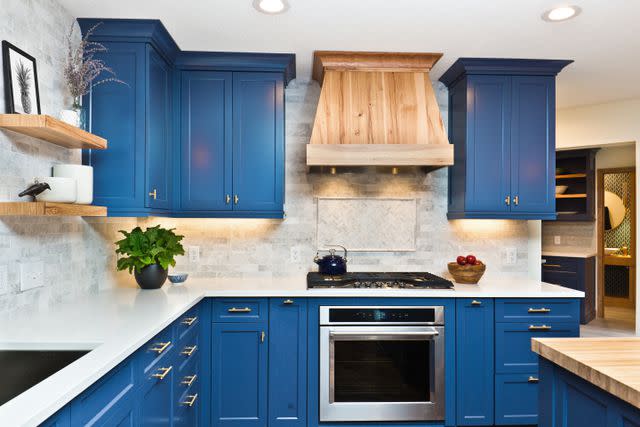
YinYang / Getty Images
Best for: Heat-resistance, moisture-resistance, scratch-resistance, and stain-resistance.
Laminate is essentially a resin combined with paper to produce the desired color, design, style, or pattern. The laminate paper is applied to a wood substrate core, which is typically made of plywood, MDF, or particleboard. This process increases the strength and durability of the material, while also sealing the substrate to protect against heat, moisture, stains, and abrasive damage.
Using laminate in the construction of a kitchen cabinet is a good way to keep costs low. However, the durability of the product relies heavily on the quality of the material. Low-pressure laminate (LPL) tends to be more prone to cracks or chips than high-pressure laminate (HPL), so it's recommended to invest in high-pressure laminate for kitchen cabinet construction.
Thermofoil
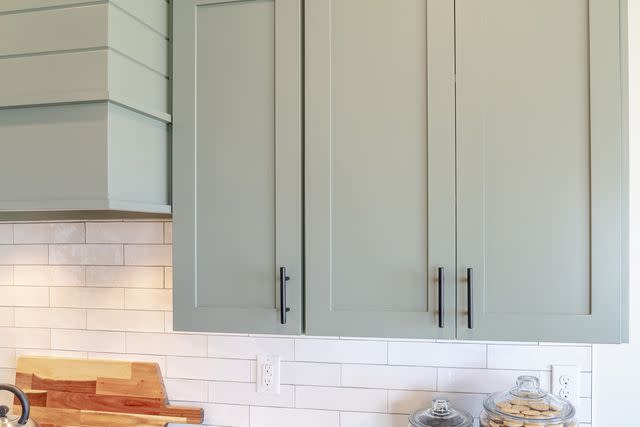
Jason Finn / EyeEm / Getty Images
Best for: Colors, patterns, designs, and easy cleaning.
Creating a design and style that suits the aesthetic of the kitchen isn't always easy, but with the wide variety of options available with thermofoil kitchen cabinets, you can find the right look for your home. Thermofoil cabinets typically consist of an MDF core with a foil-like material that has been vacuum sealed over the MDF with high heat.
This material is relatively inexpensive and easy to keep clean by wiping down the cabinets with a damp cloth as needed. Thermofoil cabinets are resistant to warping and fading, though this material is sensitive to heat, moisture, and abrasive damage. It also tends to be susceptible to peeling and is difficult to reface or paint.
High-Density Fiberboard (HDF)
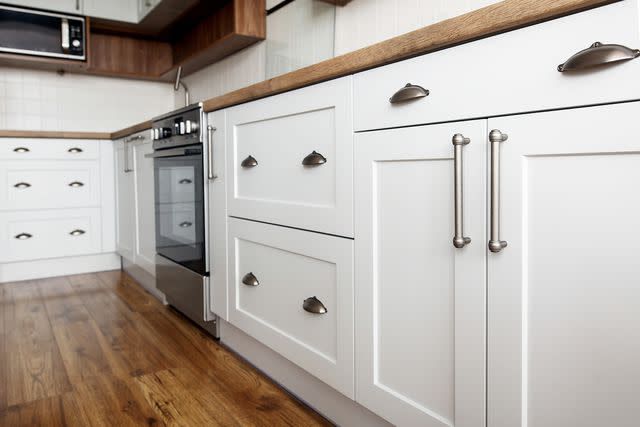
Bogdan Kurylo / Getty Images
Best for: Density, styles, affordability, and painting.
Similar to MDF, high-density fiberboard or HDF is an affordable material that is well-suited for use in the construction of kitchen cabinets. It is commonly used to make kitchen cabinet panels, with a hardness and appearance that mimics solid wood cabinetry. HDF is both denser and more affordable than either hardwood or plywood, making it a great choice for DIYers that are trying to save on material costs.
While it doesn't hold screws or nails well, if you are planning to paint the cabinets, then HDF is a good option. This material remains stable in both humid and dry locations, though HDF is susceptible to water damage, so it's important to ensure dishes, cups, and other kitchen items are properly dried before putting them into an HDF cabinet.
Choosing a Kitchen Cabinet Material
The type of material that is best for your kitchen cabinets depends on heavily on personal preference, though there is more than just the aesthetics to think about when you are choosing a kitchen cabinet material. It's also important to consider the durability and strength of the material, especially in homes with kids or occupants that are rough on the cabinetry. Stainless steel is a highly durable material often used in industrial kitchens, though it isn't a common option in residential kitchens, so you may prefer solid wood or plywood cabinets if durability is a primary consideration.
Just keep in mind that high-quality materials cost more than wood substrates, wood veneers, or any other engineered wood kitchen cabinet materials. HDF and MDF can be effective options for kitchen cabinets. These materials are lightweight, low cost, and relatively easy to work with. Thermofoil, laminate, and melamine are also inexpensive kitchen cabinet materials that mimic the appearance of wood, so the kitchen can look great without emptying your wallet.
Read Next:How to Install Kitchen Cabinets

